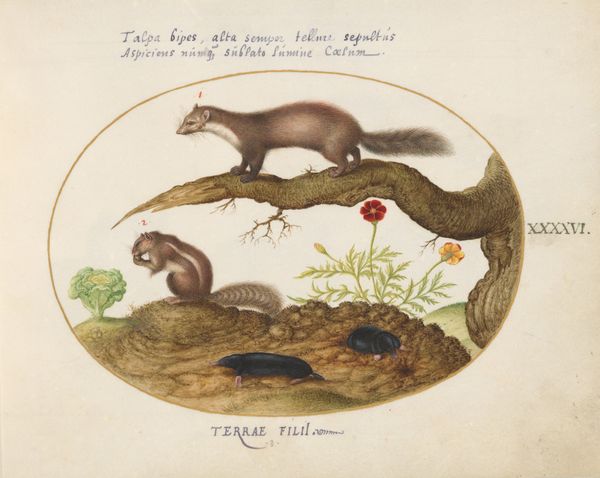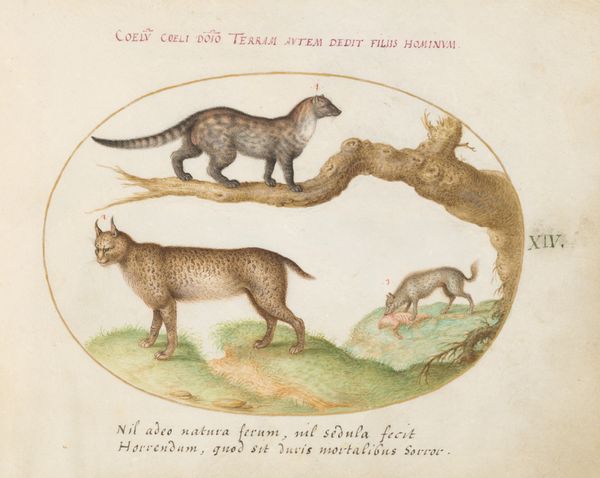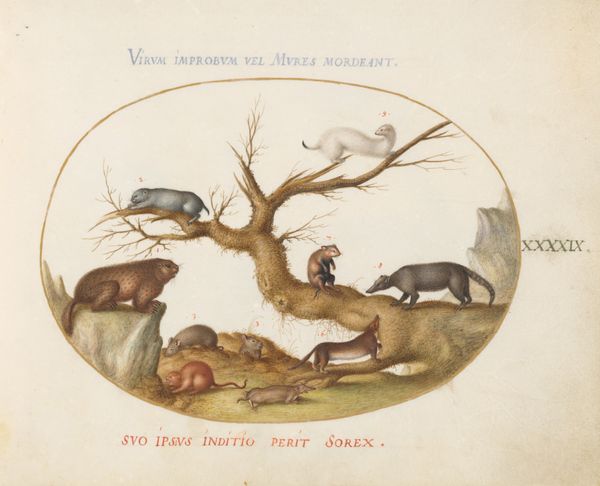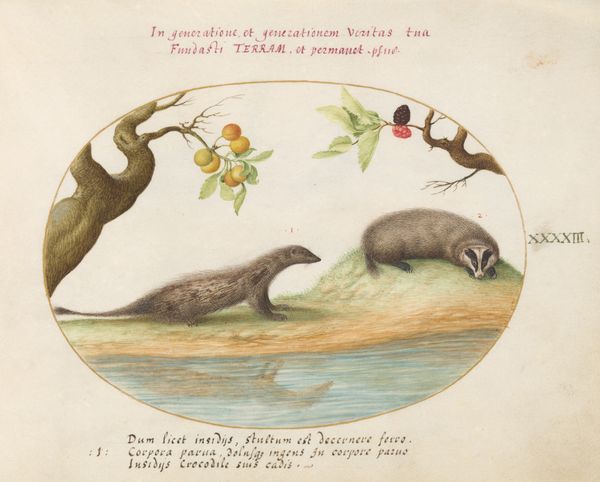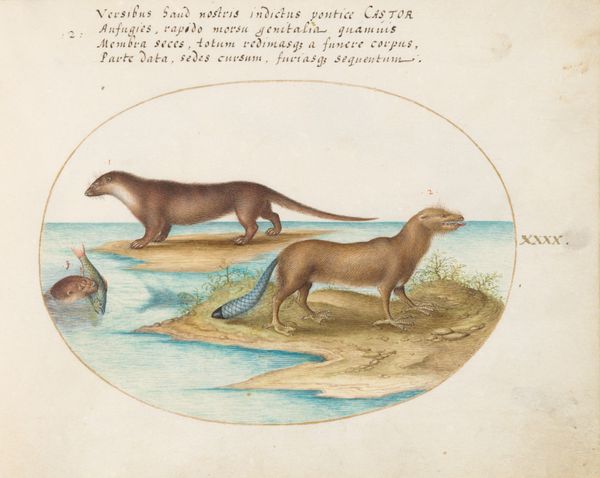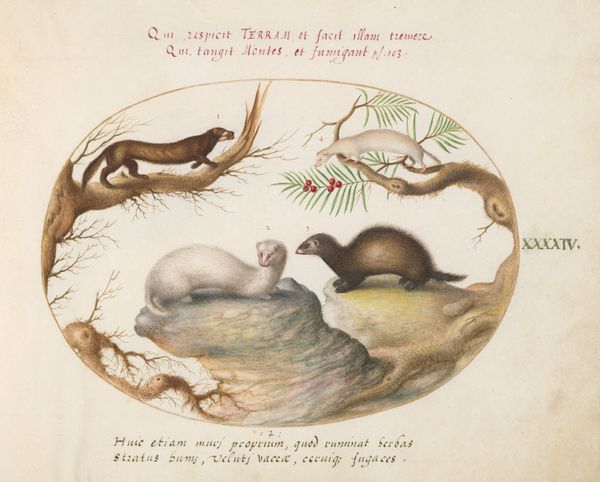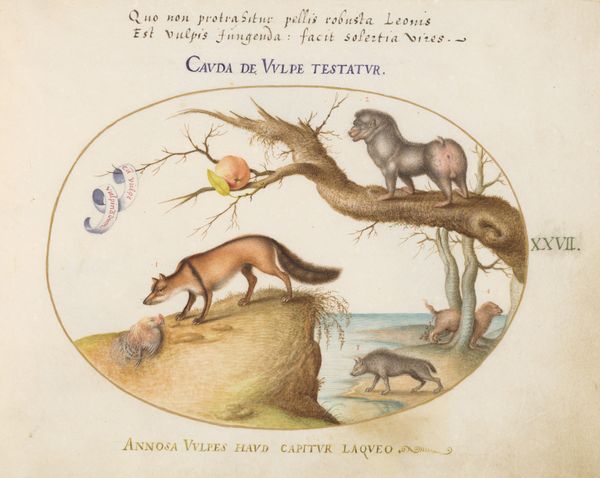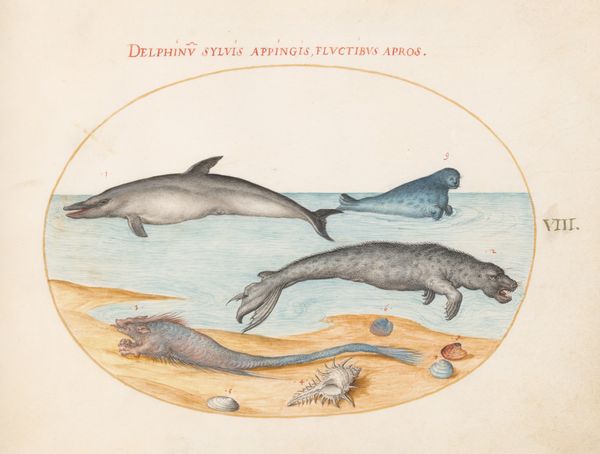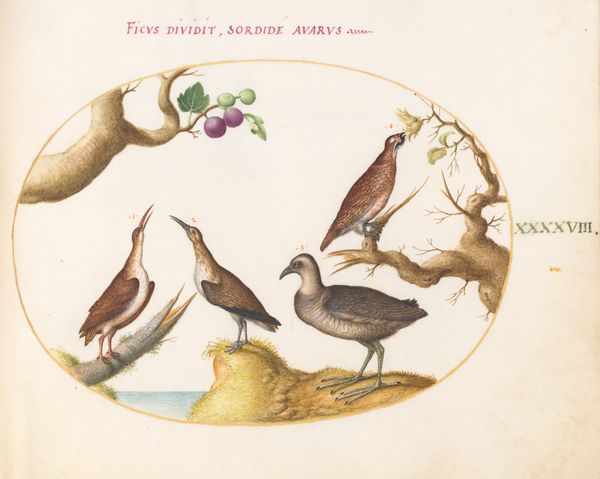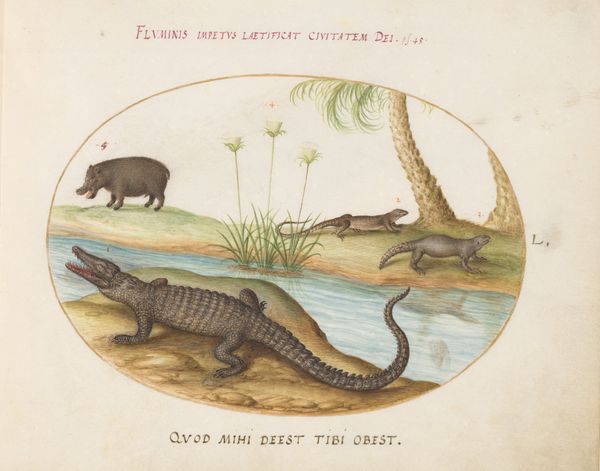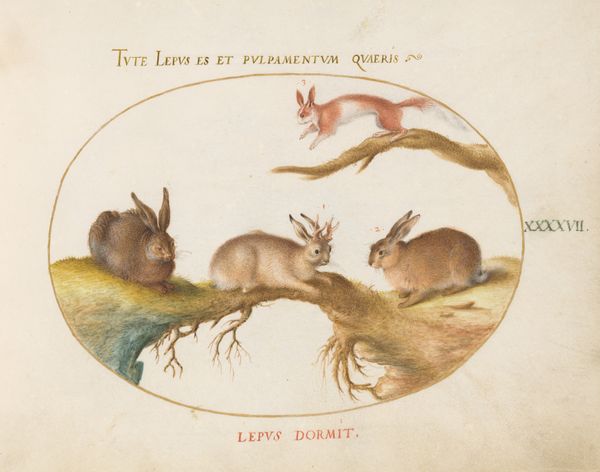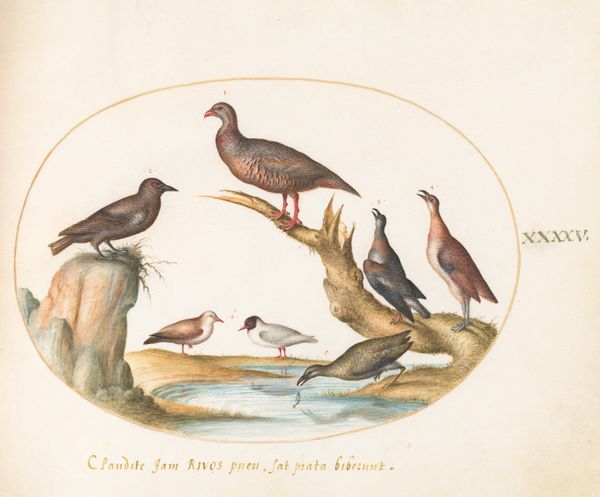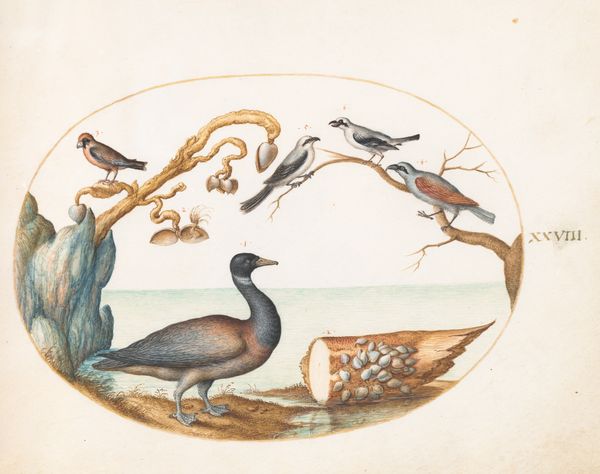
Plate 45: Weasels, a Ferret, and a "Nut Mouse" c. 1575 - 1580
0:00
0:00
drawing, coloured-pencil
#
drawing
#
coloured-pencil
#
11_renaissance
#
coloured pencil
#
watercolour illustration
#
northern-renaissance
Dimensions: page size (approximate): 14.3 x 18.4 cm (5 5/8 x 7 1/4 in.)
Copyright: National Gallery of Art: CC0 1.0
Curator: At first glance, this watercolor illustration evokes a sense of delicate observation; it feels quite scientific, almost like a specimen page. Editor: Indeed. What we have here is "Plate 45: Weasels, a Ferret, and a \"Nut Mouse\"", a colored-pencil drawing dating from about 1575 to 1580 by Joris Hoefnagel, a Northern Renaissance artist. Curator: It's intriguing how he's rendered the fur – you can practically feel the texture, and the subtle variations in color are really striking. It raises questions about his access to these animals and what the means were for production of these complex renderings. Editor: Hoefnagel's work was often commissioned by wealthy patrons, and natural history illustration became increasingly popular in that period. These images weren't merely scientific; they were markers of prestige. Think of the paper and pigments—their production and trade all had social and economic contexts. This artwork’s very existence speaks to wealth and status. Curator: I wonder about the choice of framing these creatures within a sort of oval cartouche. What impact do you think the visual framing device has on how it's perceived, historically? Editor: That cartouche is key. It presents the scene as controlled and contained. Consider how museums and collectors desired to organize the natural world. The Latin inscription above translates roughly to "He has fixed the orb of the earth which shall not be moved." It reflects a desire for order but perhaps ironically in something so wild as animal depiction! This speaks to how humans impose meaning and hierarchies, in art, culture, and even the animal kingdom. Curator: The piece invites a renewed view of familiar materials and challenges assumptions around their use in art historical contexts. I feel that my eye lingers on the small detail. Editor: For me, Hoefnagel's careful details capture a specific cultural moment, revealing Renaissance desires to classify nature and control imagery. It prompts thoughts of our relationship to both art and nature today.
Comments
No comments
Be the first to comment and join the conversation on the ultimate creative platform.
